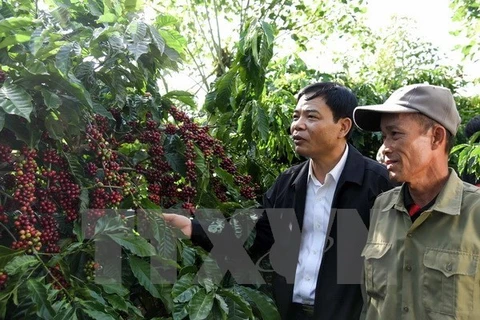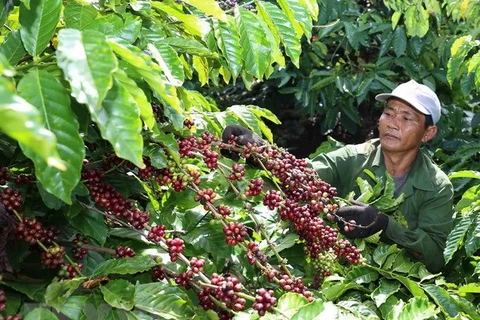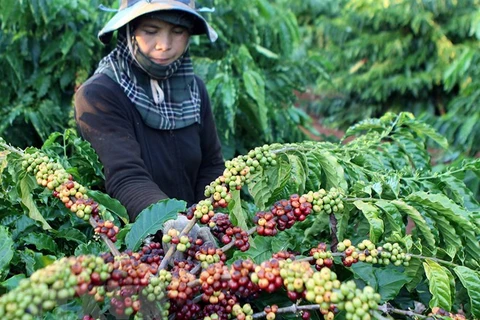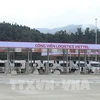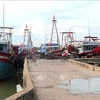Dak Lak (VNS/VNA) - Dak Lak, the country’s largest coffee growing province, plans to reduce the area under the crop from 204,800ha now to 180,000ha by 2030, according to Vice Chairman of the provincial People’s Committee Nguyen Hai Ninh.
The Central Highlands province will continue to advise farmers to replace coffee trees aged over 15 years, affected by diseases or have low yields, he said.
More than a third of the province’s trees are at least 15 years old. Many grow in unzoned areas, on slopes of more than 15 degree or lack irrigation and suitable soil and climate for coffee.
The province had sought to replace more than 41,580ha of old coffee trees in 2011-2020. Farmers and companies have so far replanted around 26,800ha.
Huynh Quoc Thich, Deputy Director of the Department of Agriculture and Rural Development, said most replanted areas have nine high-yield and -quality robusta coffee varieties: TR4, TR5, TR6, TR7, TR8, TR9, TR11, TR12, TR13.
They yield 4.2 – 7 tonnes per hectare and are resistant to coffee leaf rust, a fungal disease which can cause loss of leaves and affect fruiting.
TR9, TR11, TR12, TR13 have their harvests in the dry season, meaning the quality of the coffee is not affected by rain during the process of drying.
Farmers and companies have been meticulous with their replanting, choosing high-quality strains, preparing the land and tending, according to the department.
But the task has been slow, with farmers lacking resources and the high prices of some fruits like avocado and durian tempting many to intercrop them in their coffee plantations.
As of last August the province had farmers growing certified coffee on a total area of 43,660ha.
Their certifications are from various international organisations such as the Common Code for Coffee Community, the Rainforest Alliance Certified Coffee and the Fair Trade Labelling Organisation (FLO).
Y Loan Nie, who plants coffee to FLO standards in Cu M’gar district’s Cu Dlie M’nong commune, said previously his family grew coffee using traditional techniques and earned a low income.
Over five year of growing to FLO standards, he has been trained in growing clean coffee and earns higher incomes and has regular buyers.
The province is entering the 2018-2019 coffee harvest season and hopes to harvest 464,175 tonnes of beans, up nearly 4,400 tonnes from the last season though the area has shrunk by nearly 4,204ha this year.
In the previous season it exported more than 191,100 tonnes of coffee beans, accounting for 10.6 percent of the country’s total.-VNS/VNA
The Central Highlands province will continue to advise farmers to replace coffee trees aged over 15 years, affected by diseases or have low yields, he said.
More than a third of the province’s trees are at least 15 years old. Many grow in unzoned areas, on slopes of more than 15 degree or lack irrigation and suitable soil and climate for coffee.
The province had sought to replace more than 41,580ha of old coffee trees in 2011-2020. Farmers and companies have so far replanted around 26,800ha.
Huynh Quoc Thich, Deputy Director of the Department of Agriculture and Rural Development, said most replanted areas have nine high-yield and -quality robusta coffee varieties: TR4, TR5, TR6, TR7, TR8, TR9, TR11, TR12, TR13.
They yield 4.2 – 7 tonnes per hectare and are resistant to coffee leaf rust, a fungal disease which can cause loss of leaves and affect fruiting.
TR9, TR11, TR12, TR13 have their harvests in the dry season, meaning the quality of the coffee is not affected by rain during the process of drying.
Farmers and companies have been meticulous with their replanting, choosing high-quality strains, preparing the land and tending, according to the department.
But the task has been slow, with farmers lacking resources and the high prices of some fruits like avocado and durian tempting many to intercrop them in their coffee plantations.
As of last August the province had farmers growing certified coffee on a total area of 43,660ha.
Their certifications are from various international organisations such as the Common Code for Coffee Community, the Rainforest Alliance Certified Coffee and the Fair Trade Labelling Organisation (FLO).
Y Loan Nie, who plants coffee to FLO standards in Cu M’gar district’s Cu Dlie M’nong commune, said previously his family grew coffee using traditional techniques and earned a low income.
Over five year of growing to FLO standards, he has been trained in growing clean coffee and earns higher incomes and has regular buyers.
The province is entering the 2018-2019 coffee harvest season and hopes to harvest 464,175 tonnes of beans, up nearly 4,400 tonnes from the last season though the area has shrunk by nearly 4,204ha this year.
In the previous season it exported more than 191,100 tonnes of coffee beans, accounting for 10.6 percent of the country’s total.-VNS/VNA
VNA

